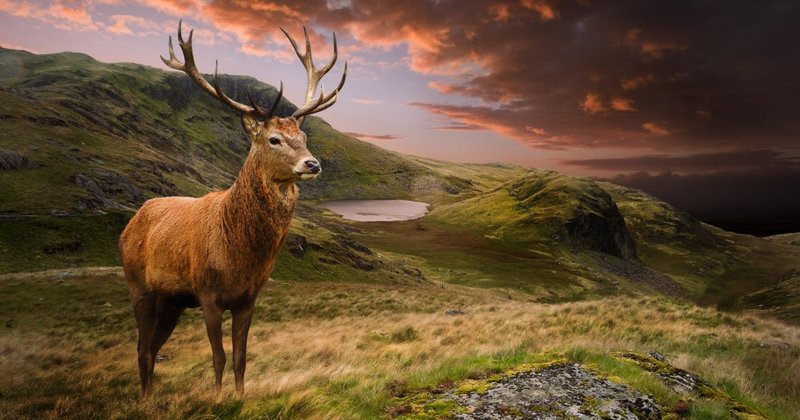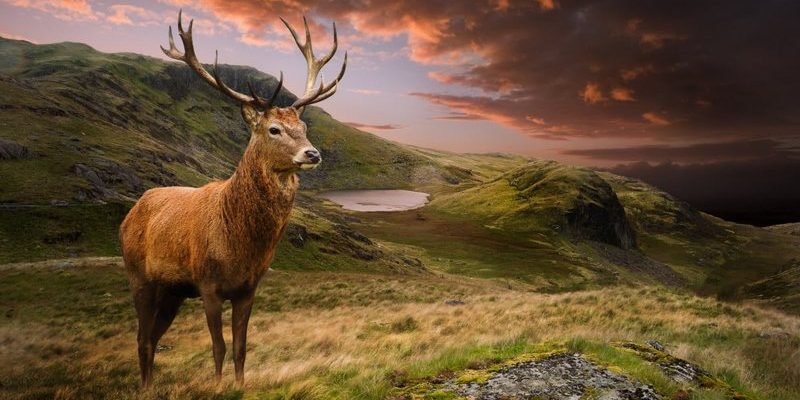
Now, you may be wondering why red deer specifically stand out in the animal kingdom. Picture this: a group of these impressive beasts, standing tall against a backdrop of a golden sunset, their antlers silhouetted against the colorful sky. That scene is a perfect way to frame our discussion. So, let’s dive into the world of red deer and uncover some truly amazing facts about them.
1. A Rich Historical Background
Red deer hold a special place in both history and folklore. They’ve been part of human culture since prehistoric times. In fact, cave paintings dating back thousands of years depict these magnificent creatures. They symbolize strength and endurance in many cultures. As you stroll through ancient stories, you’ll notice how red deer often represent the wilderness and the natural world, serving as a constant reminder of nature’s beauty and resilience.
In times when hunting was essential for survival, red deer were a crucial source of meat and materials. The antlers, for instance, were used to create tools and weapons—imagine early humans using everything nature provided to thrive in their environment. This bond between humans and red deer has shaped folklore, art, and traditions throughout the centuries, making them iconic figures in many cultures.
2. Physical Features That Impress
When it comes to physical appearance, red deer are hard to miss. Males can weigh between 400 to 500 pounds and stand about 4 feet at the shoulder. Their coats are typically a reddish-brown color, which gets slightly darker during the winter months. Isn’t it interesting how nature helps animals adapt to their environments? The thick, warm fur keeps them cozy in cold weather, while the lighter hair helps regulate their body temperature during warmer seasons.
One of the most striking features of red deer is their impressive antlers. Males, also called stags, grow these antlers every year. During the winter, they shed them, and new ones begin to grow in the spring. This process is called “antler casting,” and it’s a fascinating cycle of growth. The antlers can reach up to 4 feet in width and can weigh around 40 pounds! That’s a lot of weight for something that’s essentially made of bone. It’s like nature’s own version of a superhero costume!
3. Their Social Structure
Red deer are quite social animals, often found in herds. Typically, these groups consist of females and their young, while mature males prefer to roam alone or in small bachelor groups. Here’s the thing—when the mating season arrives, known as the rut, males will join the female herds to compete for attention.
During the rut, stags will engage in displays of strength, which can be quite dramatic. They’ll roar, clash antlers, and strut around to show off their size. It’s a bit like a dance-off but with much more at stake! The victor gets to mate with multiple females, ensuring that the strongest genes are passed on to future generations. Nature really knows how to balance competition and cooperation!
4. Their Communication Skills
You might be surprised to learn that red deer have a unique way of communicating. They use a variety of sounds to express themselves—everything from soft grunts to loud roars. These vocalizations can convey different messages, such as signaling danger or attracting mates. Isn’t it fascinating how animals develop their own languages?
In addition to vocal sounds, red deer also communicate through body language. A relaxed stance can signal calmness, while raised tails or prancing can indicate excitement or alertness. It’s like they have a full vocabulary of gestures! If you ever find yourself watching a herd of red deer, take note of how they interact. It’s a prime example of non-verbal communication in the animal kingdom.
5. Incredible Adaptability
Red deer are masters of adaptation. They thrive in various habitats, from dense forests to open grasslands. This flexibility allows them to live across a wide range of climates and landscapes. You might be wondering how they manage to do this. Well, it all boils down to their diet and behavior.
Red deer are herbivores, munching on grasses, leaves, and shrubs depending on what’s in season. They’re particularly good at browsing on young tree shoots, which gives them an edge in forested areas. When food is scarce, they can travel considerable distances for foraging, showcasing their resilience. This adaptability not only helps them survive but also contributes to their role in the ecosystem, as they help to manage plant growth in their habitats.
6. Life Cycle and Reproduction
The life cycle of a red deer is as intriguing as the animal itself. Female red deer give birth to a single calf, typically in late spring. The newborns are tiny, weighing about 25 pounds, and have a spotted coat that helps camouflage them in the dappled sunlight of the forest floor. Isn’t that a clever design by nature?
For the first few weeks, the mother keeps the calf hidden in the underbrush while she forages nearby. This protective strategy ensures that the young are safe from predators. Once the calf grows stronger, it will join the herd, learning essential survival skills from its mother. As they grow, calves become more independent, eventually transitioning into adulthood and, hopefully, continuing the cycle.
7. Habitat and Distribution
Red deer are predominantly found throughout Europe, though they have also been introduced to parts of Asia, North America, and New Zealand. In their native range, they favor forests with plenty of cover, as well as grasslands where they can graze.
Interestingly, their habitat choices affect their size and behavior. For instance, red deer in the rugged highlands tend to be smaller than those living in more open areas. This variation demonstrates how environments can shape an animal’s physical attributes, which is a captivating aspect of wildlife ecology.
8. Conservation Status
While red deer are currently not endangered, they do face threats from habitat loss and hunting. Many countries have established conservation efforts to protect these magnificent creatures and their habitats. You might find it surprising to learn that, when managed properly, hunting can actually play a role in conservation. Regulated hunting programs can help maintain healthy populations and reduce overgrazing in certain areas.
It’s essential to strike a balance between protecting wildlife and allowing sustainable practices. Supporting conservation efforts and responsible wildlife management is crucial if we want future generations to enjoy the beauty of red deer in their natural habitats.
9. Their Role in Ecosystems
Red deer aren’t just beautiful creatures; they play a vital role in their ecosystems. As herbivores, they help control the growth of shrubs and young trees, which can prevent overgrowth and promote biodiversity. Their grazing habits create a more diverse habitat, allowing various plant species to thrive.
Moreover, red deer contribute to nutrient cycling. When they graze, their manure enriches the soil, helping plants grow healthier. It’s a wonderful reminder of nature’s interconnectedness, where every species plays a part in maintaining balance.
10. The Joy of Observing Red Deer
For wildlife enthusiasts, watching red deer in their natural habitats can be a truly magical experience. Whether you’re hiking through a national park or simply enjoying nature, spotting a red deer can feel like witnessing a living piece of history. Their grace and beauty are captivating, and they often leave observers in awe.
If you’re lucky enough to encounter them, take a moment to appreciate their presence. Remember to keep your distance, as they are wild animals and deserve their space. So, whether you’re armed with a camera or just your own eyes, enjoy every fleeting moment with these magnificent creatures.
In conclusion, red deer are far more than just a pretty face in the woods. Their history, physical features, social structures, and ecological roles all contribute to the fascinating tapestry of life in the natural world. So, the next time you’re out in nature, keep an eye out for these amazing animals. They might just surprise you with their beauty and grace!

